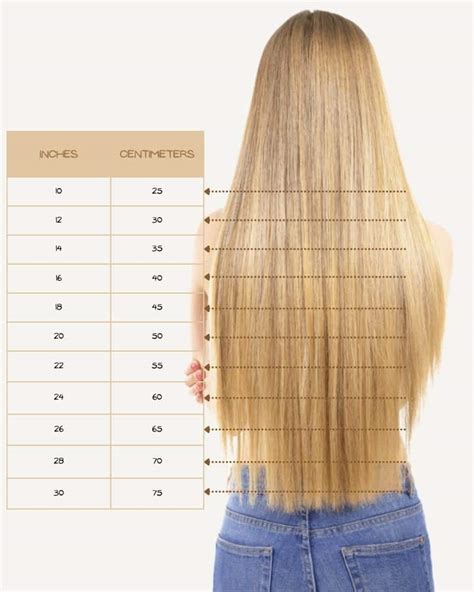Introduction
Hair extensions have become increasingly popular in recent years, offering individuals the opportunity to instantly transform their appearance. Among the various types of hair extensions available, human hair extensions reign supreme due to their natural look, versatility, and durability. This comprehensive guide delves into the nuances of human hair extensions, providing insights into their length, price, quality, and the specific needs and motivations of customers.

Types of Hair Extensions
Human hair extensions can be categorized based on their source and processing method:
-
Virgin hair extensions: Derived from hair that has never been chemically treated, virgin hair extensions offer the highest quality and most natural appearance.
-
Remy hair extensions: Collected from a single donor, Remy hair extensions maintain the natural cuticle alignment, resulting in tangle-free and silky smooth hair.
-
Processed hair extensions: Undergo various chemical treatments to alter their texture, color, or length. This includes dyed, bleached, and permed hair extensions.
Lengths of Human Hair Extensions
Hair extension lengths are typically measured in inches. The most popular lengths for human hair extensions include:
- 12-14 inches: Ideal for adding volume and fullness to short or shoulder-length hair.
- 16-18 inches: Suitable for achieving a classic, mid-length hairstyle.
- 20-22 inches: Creates long, flowing locks that can be styled into various braids and buns.
- 24 inches and above: Offers maximum length and versatility for dramatic transformations.
Prices of Human Hair Extensions
The price of human hair extensions varies greatly depending on factors such as hair quality, length, and brand. On average, customers can expect to pay:
- Virgin human hair extensions: $150-$300 per bundle of 100 grams
- Remy human hair extensions: $100-$200 per bundle of 100 grams
- Processed human hair extensions: $50-$150 per bundle of 100 grams
Quality of Human Hair Extensions
Several factors influence the quality of human hair extensions, including:
- Texture: Different hair types (coarse, medium, fine) have unique textures that can affect the overall appearance and feel of the extensions.
- Longevity: High-quality human hair extensions can last up to a year or more with proper care and maintenance.
- Tangle resistance: Remy hair extensions are less prone to tangles due to their aligned cuticles.
- Shedding: Minimal shedding is expected with high-quality human hair extensions.
Customer Motivations and Pain Points
Understanding the needs and motivations of customers is crucial in the hair extension industry. Common motivations for wearing hair extensions include:
- Increased hair volume: Extensions provide instant volume and fullness to thin or fine hair.
- Variety in style: Extensions offer endless styling options, allowing individuals to experiment with different lengths, textures, and colors.
- Protection: Extensions can act as a barrier, shielding natural hair from heat styling and environmental damage.
Pain points that customers may encounter when using hair extensions include:
- Cost: Human hair extensions can be expensive, especially for higher quality and longer lengths.
- Maintenance: Extensions require regular care, including washing, conditioning, and styling, which can be time-consuming.
- Damage: Improper installation or care can cause damage to both the extensions and the natural hair.
FAQs about Human Hair Extensions
-
How long do human hair extensions last?
– High-quality human hair extensions can last up to 12 months or more with proper care and maintenance. -
Can I style human hair extensions?
– Yes, human hair extensions can be styled using heat tools and products, just like your natural hair. -
What types of hair extension methods are available?
– There are various methods, including tape-in extensions, clip-in extensions, and fusion extensions. -
Are human hair extensions safe to use?
– Yes, human hair extensions are generally safe to use when installed and maintained properly by a qualified hair professional. -
How often do I need to re-install human hair extensions?
– The frequency depends on the hair extension method used. Tape-in extensions typically need to be re-installed every 6-8 weeks, while fusion extensions last 3-6 months or longer. -
Can I dye human hair extensions?
– Virgin and Remy human hair extensions can be dyed, but it is recommended to have a professional colorist do it to avoid damage. -
How do I take care of human hair extensions?
– Wash and condition regularly, brush gently, and use heat protectant when styling. -
What are the signs of low-quality human hair extensions?
– Tangling, excessive shedding, and a coarse or unnatural texture are all indicators of low-quality hair extensions.
Conclusion
Human hair extensions offer a versatile and transformative solution for individuals seeking to enhance their hair’s length, volume, or style. Understanding the different types, lengths, prices, and quality levels can empower customers to make informed decisions. By addressing common customer motivations and pain points, hair extension providers can effectively meet the needs of their clients. With proper care and maintenance, human hair extensions can provide years of beautiful and natural-looking locks.
